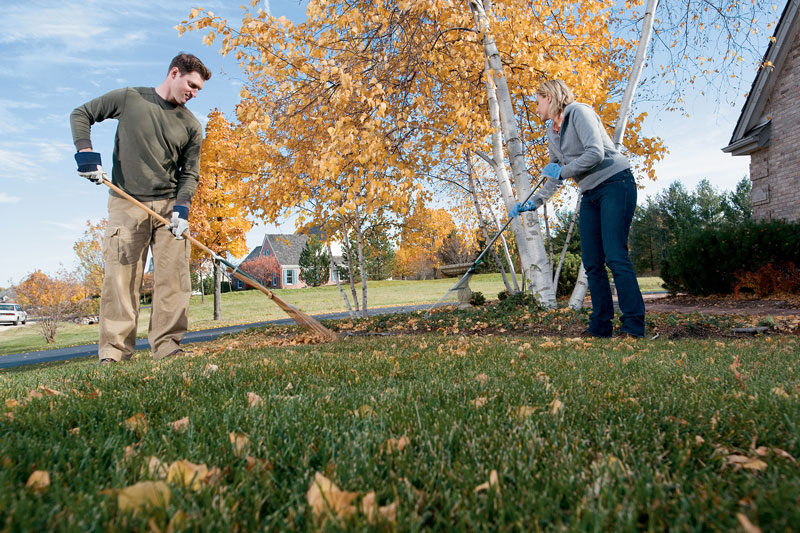While tasks like mowing, watering, and weeding likely top your to-do list, there is one often overlooked chore that could make all the difference in the health and appearance of your grass – lawn aeration. Aeration is a simple but powerful process that helps deliver nutrients, water, and oxygen to your lawn’s root system.
Done correctly and regularly, aerating your lawn can improve its density, strengthen resistance to drought and pests, and speed growth. In this post, I’ll explain why aeration matters and provide tips for doing it yourself or hiring a pro to ensure your grass gets the TLC it needs for a lush, green summer.
What is Lawn Aeration?
Lawn aeration is the process of making small holes in the surface of your yard, typically by using a specialized machine known as a lawn aerator. These holes, which reach down into the soil below the grass, act like tiny tunnels, providing a direct pathway for air, water, and nutrients to reach the roots of your grass where they’re needed most.
The goal of this kind of yard care is to reduce soil compaction, which happens over time as foot traffic, mowing, and natural settling cause the soil particles to press together tightly, limiting the space available for air and water to circulate. Aeration combats this issue, loosening the soil and promoting healthier, stronger growth.
Enhanced Nutrient Uptake
Aerating your lawn dramatically increases the efficiency of nutrient uptake. The holes created by aeration provide a direct pathway for fertilizers and nutrients to penetrate deeper into the soil and reach the roots of your grass. This increases the effectiveness of any lawn treatments, leading to healthier, greener grass.
Improved Water Absorption
A well-aerated lawn absorbs water more effectively. Instead of water pooling on the surface or running off, it can descend directly to the root zone, which can help to reduce water wastage and ensure your grass gets the vital hydration it needs.
Stronger Grass Roots
Aeration encourages the growth of stronger, deeper grassroots. By loosening compacted soil, roots have more room to expand and take up nutrients. This results in a more vigorous lawn that is more resistant to periods of drought and other stresses.
Prevention of Thatch Buildup
Lawn aeration also helps to prevent the buildup of thatch – a layer of dead grass, roots, and debris that can accumulate on a lawn. Excessive thatch can prevent water, nutrients, and air from reaching the soil, but aeration helps to break it up and decompose it more rapidly.
Increased Resilience & Recovery
Aerated lawns are better equipped to handle the stresses of heavy foot traffic, frequent mowing, and inclement weather conditions. By promoting the growth of healthy, deep roots, aeration allows the grass to bounce back more quickly after being subjected to these types of stresses.
Promotes Healthy Microbial Activity
Lawn aeration has a positive impact on the soil’s ecosystem. By improving soil conditions, aeration can boost the activity of beneficial soil microorganisms, which play a key role in decomposing thatch and releasing nutrients.
Enhanced Turfgrass Cushioning
Lastly, regular lawn aeration can improve lawn feel underfoot. With improved root growth and less soil compaction, the lawn’s turfgrass develops a softer, more comfortable cushioning effect, making your yard a more enjoyable place to relax or play.
Best Lawn Aeration Practices
As we’ve seen, lawn aeration offers a myriad of benefits, improving everything from nutrient uptake to resilience against stress. Now that we understand why aeration is critical, the next step is to delve into the best practices to ensure maximum effectiveness.
Timing is Key
The timing of your aeration process plays a significant role in how effective the procedure will be. The best times to aerate are during the growing seasons, typically in the spring and fall when the grass can heal and fill in any open areas after soil plugs are removed.
Choose the Right Aerator
Not all aerators are created equal. There are two main types: spike aerators, which make holes in the soil by pushing it sideways, and plug aerators, which remove a core or ‘plug’ of grass and soil from the lawn. For most lawns, especially those with a heavy clay soil type, a plug aerator is more effective.
Proper Lawn Preparation
Before you begin aerating, it’s essential to prepare your lawn properly. Make sure the soil is moist enough. Aerating the day after a rain shower or watering your lawn the day before is ideal. Also, be sure to mark sprinkler heads or buried utility lines before you start to avoid damaging them.
Follow Up with Overseeding and Watering
Post-aeration is the ideal time to overseed your lawn to promote thick and healthy grass, as the seeds can make direct contact with the soil through the holes. After aeration and overseeding, make sure to water the lawn well to ensure the seeds germinate and the lawn recovers quickly from the aeration process.
Regular Maintenance
Remember, aeration is not a one-time thing but rather an integral part of your lawn care routine. Depending on your lawn’s condition and the type of soil, you might need to aerate once a year or every other year. Regular aeration will keep your lawn looking its best year-round.
Hire a Professional
If you’re unsure of how to aerate your lawn or don’t have the necessary equipment, consider hiring a professional. They have the knowledge and expertise to ensure that your lawn receives proper aeration without causing any damage. Visit this website to schedule an appointment and learn more about their services.
In Conclusion
Lawn aeration is an essential aspect of maintaining a healthy, lush green lawn. It offers a host of benefits that make it worth the time and effort. Following the best practices discussed in this article will ensure that you get the most out of your aeration process. Aerate regularly, and your lawn will thank you with more robust roots, improved nutrient uptake, and an overall healthier appearance.







